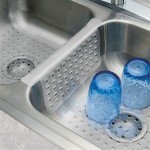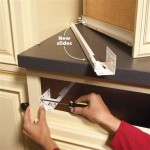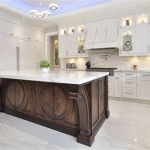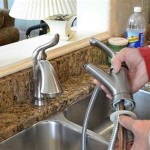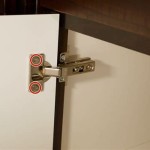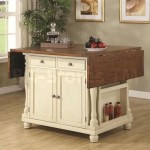Average Depth Of Kitchen Worktop: A Comprehensive Guide
The kitchen worktop, also known as the countertop, is a fundamental element of any kitchen design. It serves as a primary surface for food preparation, appliance placement, and general kitchen activities. One of the critical dimensions to consider when planning a kitchen is the depth of the worktop. Understanding the standard and average depths, along with factors influencing these dimensions, is crucial for effective kitchen design and functionality.
The depth of a kitchen worktop refers to the measurement from the front edge of the countertop to the back edge, where it meets the wall. This dimension significantly impacts the usable workspace available and must be carefully considered based on kitchen size, layout, and user needs. Incorrectly chosen depth can lead to uncomfortable working conditions or inefficient use of space. This article will explore the average depth of kitchen worktops, the various factors that influence this dimension, and the implications of choosing the right depth for optimal kitchen functionality.
Standard Depth vs. Average Depth
While the terms are often used interchangeably, there is a subtle distinction between standard depth and average depth. The standard depth refers to a commonly accepted dimension widely used by manufacturers and designers. This provides a benchmark for consistency and ease of installation. The average depth, on the other hand, may take into consideration deviations from the standard due to specific design choices or custom installations.
The most common standard depth for kitchen worktops globally is 600mm (approximately 24 inches). This measurement allows for a comfortable working distance, accommodating standard-sized kitchen appliances like cooktops and ovens underneath. This depth usually accommodates standard kitchen base cabinets, which are designed to have a certain amount of overhang.
However, the average depth can vary slightly. Depending on regional preferences, kitchen sizes, and design styles, the average depth might incorporate countertops that are slightly deeper or shallower than the 600mm standard. For instance, in kitchens with limited space, a shallower worktop might be preferred. Conversely, in larger kitchens, deeper worktops might be chosen to maximize workspace.
It's also important to acknowledge that custom-made worktops can significantly influence the average depth. These are tailored to fit specific kitchen layouts and can deviate considerably from the standard. Therefore, while 600mm remains the standard, the average depth can be influenced by a range of factors and is not always strictly adhered to.
Factors Influencing Worktop Depth
Several key factors play a significant role in determining the appropriate depth of a kitchen worktop. These factors include kitchen size, layout, appliance dimensions, and the user’s individual needs and preferences.
Kitchen Size and Layout: The available space in the kitchen significantly impacts the ideal worktop depth. Smaller kitchens may benefit from shallower countertops to maximize floor space and prevent the kitchen from feeling cramped. Larger kitchens, conversely, can accommodate deeper worktops, providing more space for food preparation and appliance placement. The layout of the kitchen, such as whether it's a galley, L-shape, or U-shape, also dictates the most suitable depth. Galley kitchens, with their narrow layouts, often require narrower worktops compared to larger, open-plan kitchens.
Appliance Dimensions and Placement: The dimensions of built-in appliances, such as cooktops, sinks, and ovens, influence the required worktop depth. Cooktops and sinks typically require a certain amount of surrounding countertop space for safe and efficient use. The placement of the countertop relative to these appliances also impacts the depth. For example, if a cooktop is positioned near the edge of the worktop, a deeper countertop can provide a larger buffer zone, preventing spills and splashes from reaching the floor or adjacent cabinets.
User Needs and Preferences: Personal preferences and individual needs also influence the choice of worktop depth. Some users prefer a deeper worktop to accommodate larger appliances, such as stand mixers or bread makers, or to provide ample space for food preparation. Others may prefer a shallower worktop for ergonomic reasons, particularly if they have shorter arms or limited reach. The height of the users and the intended use of the countertop should also be considered. For instance, a worktop used primarily for baking may benefit from a deeper surface than one used primarily for casual dining.
Building Codes and Accessibility Standards: In some regions, building codes or accessibility standards may dictate minimum worktop depths to ensure usability for individuals with disabilities. These standards often specify requirements for knee clearance under countertops and the accessibility of work surfaces for wheelchair users. Adhering to these codes is essential for ensuring universal accessibility and compliance with local regulations.
Aesthetic Considerations: The overall aesthetic of the kitchen also plays a role in determining worktop depth. Deeper worktops can create a more substantial and luxurious look, while shallower worktops can create a more streamlined and minimalist appearance. The choice of worktop material and edging can also influence the perceived depth. Thicker worktop materials, such as solid wood or natural stone, can visually enhance the depth and create a more premium feel. The edge profile of the worktop, such as a bullnose or bevelled edge, can also affect the perceived depth and overall aesthetic.
Implications of Worktop Depth on Kitchen Functionality
The choice of worktop depth has significant implications for the overall functionality and ergonomics of the kitchen. A well-chosen worktop depth can enhance usability, improve safety, and optimize workflow. Conversely, an incorrectly chosen depth can lead to discomfort, inefficiency, and even potential hazards.
Impact on Ergonomics: Worktop depth directly impacts the ergonomics of the kitchen. A worktop that is too deep can strain the back and arms, requiring users to reach uncomfortably to access items on the far side. Conversely, a worktop that is too shallow can limit the available workspace and force users to work in cramped conditions. The ideal worktop depth should allow users to comfortably reach all areas of the surface without straining or overextending their arms.
Influence on Workflow: The depth of the worktop influences the flow of movement and activities within the kitchen. A deeper worktop can provide more space for multi-tasking, allowing users to prepare multiple dishes simultaneously or to work alongside others without crowding. It also allows for a better organization of appliances and utensils, improving efficiency and reducing clutter. A shallower worktop, on the other hand, can restrict workflow, making it difficult to perform multiple tasks simultaneously and potentially leading to a more disorganized workspace.
Safety Considerations: Worktop depth also has safety implications. A deeper worktop can provide a larger buffer zone around hot appliances, such as cooktops and ovens, reducing the risk of burns and accidental injuries. It can also provide a more stable surface for placing heavy objects, such as pots and pans, preventing them from tipping over. A shallower worktop, on the other hand, may not provide adequate protection from hot surfaces or unstable loads, increasing the risk of accidents.
Storage Implications: Deeper worktops generally allow for deeper base cabinets underneath, providing more storage space for pots, pans, and other kitchen essentials. Shallower worktops may necessitate shallower cabinets, potentially reducing storage capacity. This is particularly important in smaller kitchens where every inch of storage space is valuable. Planning for adequate storage is essential for maintaining a clutter-free and organized kitchen.
Accessibility Considerations: For users with mobility limitations, worktop depth plays a crucial role in accessibility. Shallow worktops can make it difficult for wheelchair users to reach the sink or cooktop adequately. Conversely, overly deep worktops might make it challenging to reach the back of the countertop. The ideal worktop depth provides a balance between reachability and accessibility, accommodating various user needs and abilities. Meeting accessibility standards is crucial for creating an inclusive and usable kitchen for all.
In summary, selecting the appropriate average depth of a kitchen worktop requires careful consideration of multiple factors. Understanding the interplay of kitchen size, appliance dimensions, user needs, and aesthetic preferences is essential for creating a functional, ergonomic, and safe kitchen environment. The standard depth provides a useful baseline, but individual requirements may necessitate deviations to optimize the design for a specific space and user profile.

Height And Depth Of Kitchen Worktop Valcucine

Height And Depth Of Kitchen Worktop Valcucine

A Homeowner S Guide To Kitchen Counter Height And Depth

House Of Worktops Solid Wood Kitchen In

Kitchen Ergonomics And Height Of Your Marble Countertop

Standard Kitchen Counter Depth Hunker

Height And Depth Of Kitchen Worktop Valcucine

What Gap Do I Need Between The Worktop And Bottom Of Wall Units

Understanding The Standard Kitchen Counter Height

Understanding Kitchen Worktop Height And Depth Dimensions
Related Posts

